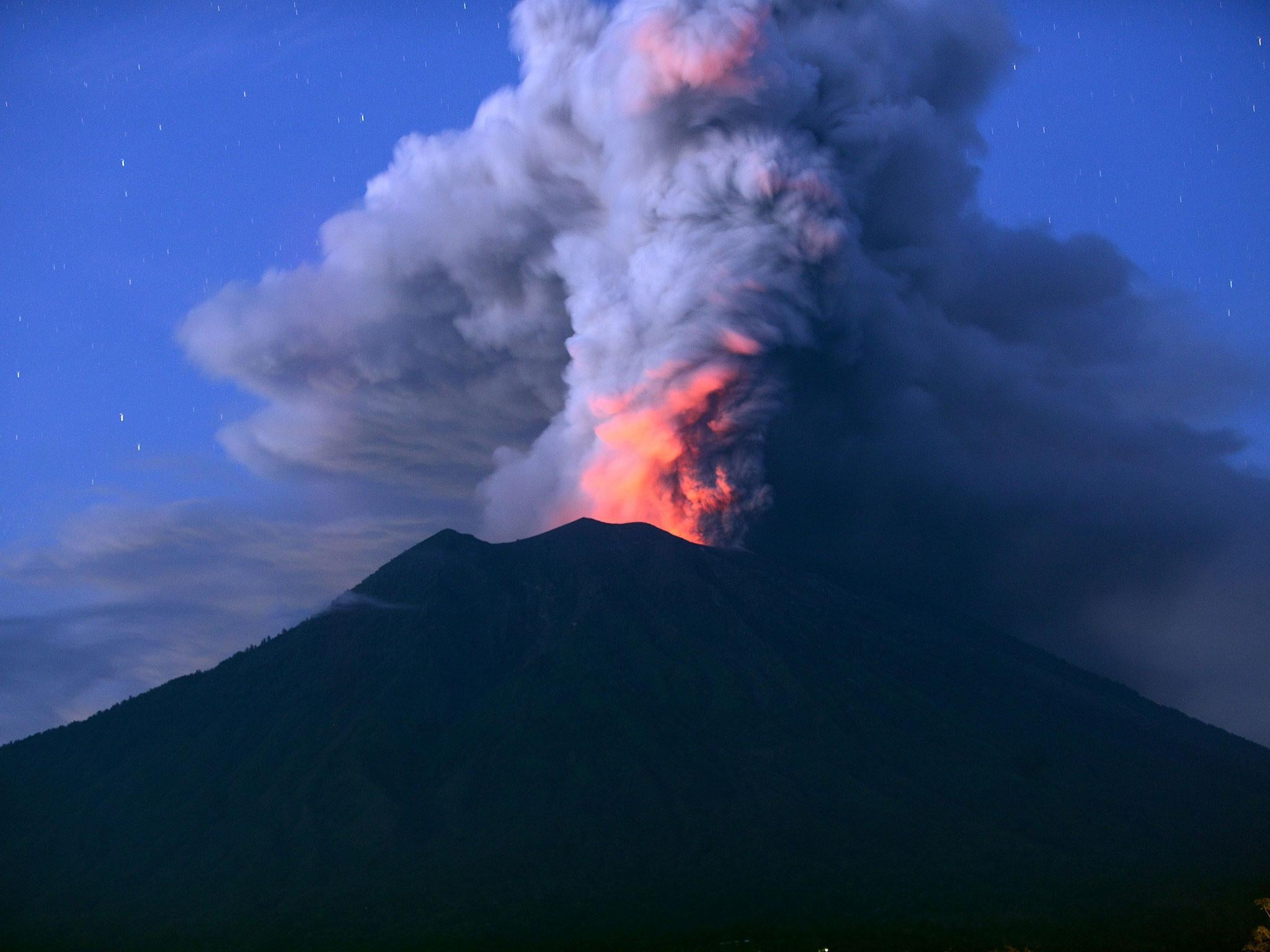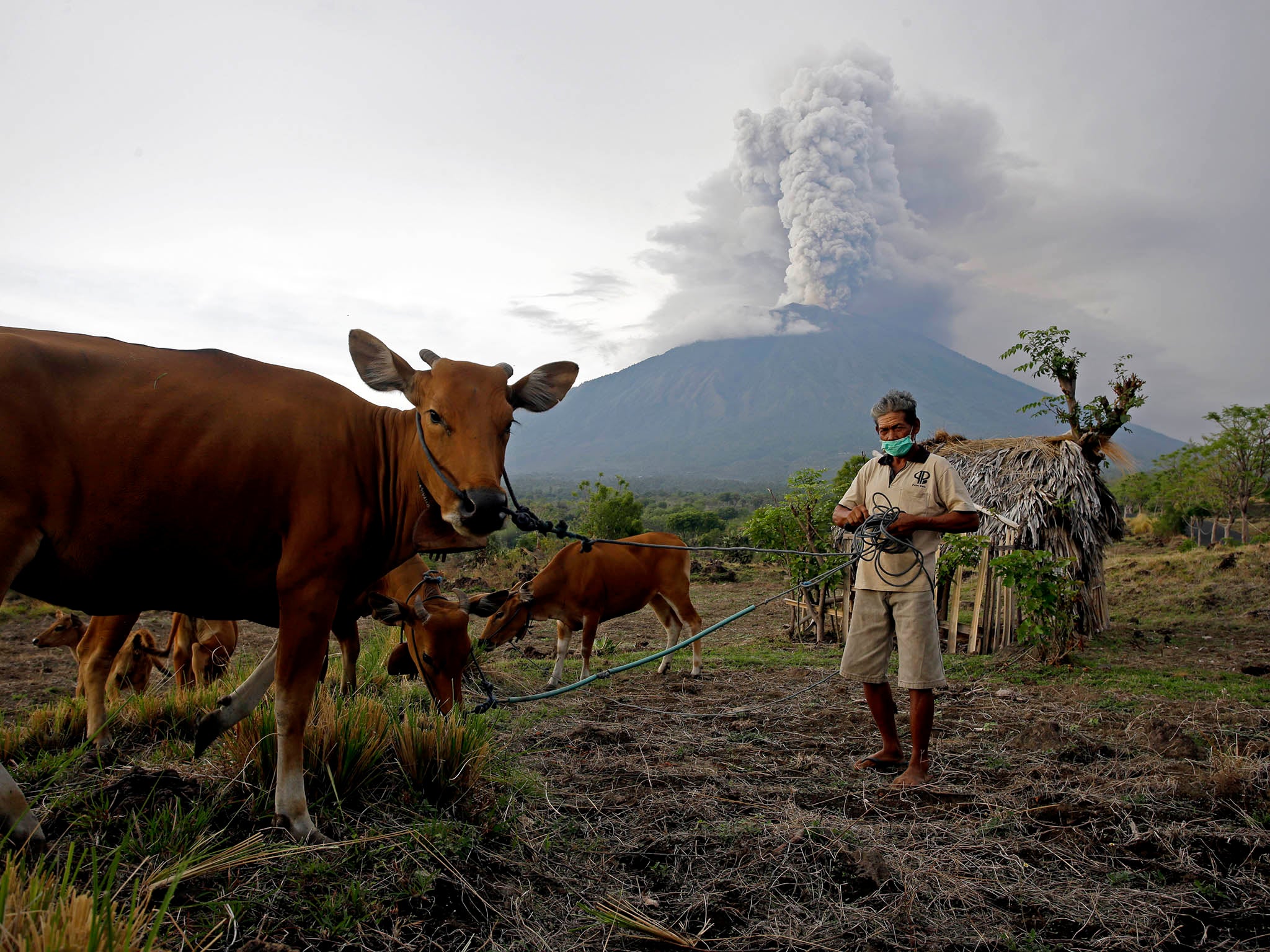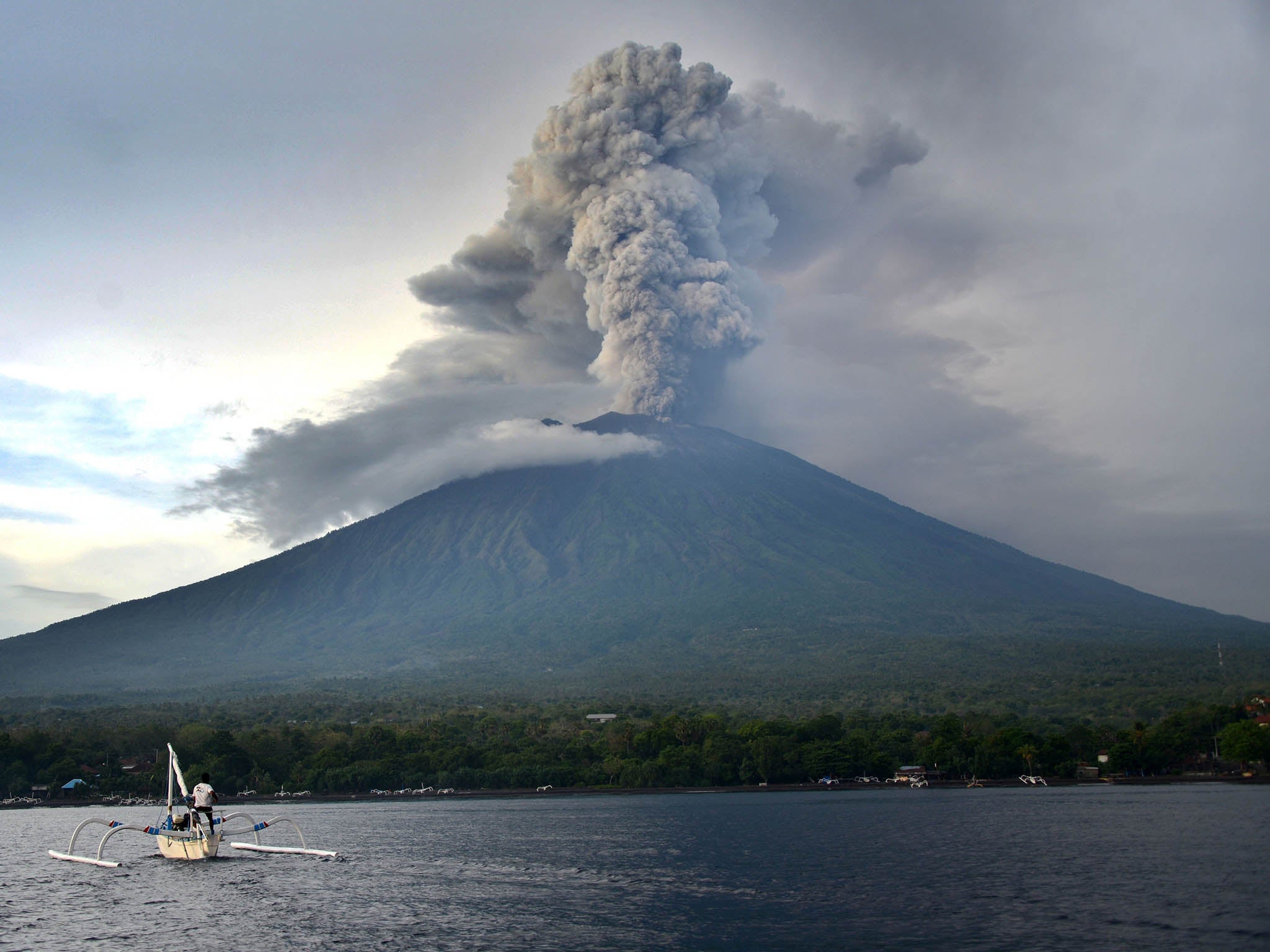Bali volcano latest: Mount Agung could remain on brink of major eruption for weeks as ash continues to spew, warn volcanologists
Large eruption could destroy island’s agriculture and have a major impact on tourism

A volcano in Indonesia could remain on the brink of a major eruption for weeks as it continues to spew ash across the island of Bali, volcanologists have warned.
Mount Agung has been spitting ash 4,000m (2.5 miles) into the air, stranding tens of thousands of tourists as the international airport remained closed for a second day.
Lava has been welling inside the volcano’s crater, but it remained unclear how bad the eruption might get or how long it could last.
David Rothery, Professor of Planetary Geosciences at the Open University, told The Independent there was a 50-50 chance of a large eruption.
“It could stay like this and fizzle out, or it could be ramping up for something big,” he said.

Dr Matt Watson, from the University of Bristol, said: “The truth is it could peter out tomorrow. I don’t think that’s particularly likely, but it’s not impossible.
“The reason people are worried about a large eruption is because the last time it erupted it went large. It was a big enough eruption to influence global temperatures.”
Mount Agung’s last major eruption in 1963 killed about 1,100 people.
It has the potential to disrupt travel for weeks, Mr Rothery said. “They’re not going to get the airport running anytime soon. If it does what it did in 1963, it could go on for weeks.
“On the other hand, if it has a big eruption, it could be over in a week.”
Authorities raised the volcano alert for Mount Agung to its highest level and told 100,000 people to leave an area extending 10km (6 miles) from its crater.
Indonesia’s National Disaster Mitigation Agency has said a larger eruption is possible, though a government volcanologist has also said Mount Agung could stay at its current level of activity for weeks and not erupt explosively.
However, a major eruption has the potential to damage crops on the island and kill anyone within the 10km evacuation radius.

“It depends on how well the evacuation zone is applied,” Dr Watson said. “Volcanoes on long fuses give authorities an advantage.
“They allow people to carefully and thoughtfully manage the process. If there’s nobody in the exclusion zone, most of the really dangerous hazards will not affect many people.”
But a large eruption could destroy the island’s agriculture and have a major impact on tourism, he added.

A Nasa satellite detected a thermal anomaly at the crater, senior Indonesian volcanologist Gede Swantika told the Associated Press, meaning a pathway from the storage chamber in the volcano’s crust has opened, giving magma easier access to the surface.
Indonesian officials first raised the highest alert two months ago when a rash of seismic activity was detected at the mountain.
More than 100,000 people living near the volcano fled their homes, many abandoning their livestock or selling them for a fraction of the normal price. The seismic activity decreased by the end of October, causing authorities to lower the alert level.
Tremors increased again last week and officials upped the alert and ordered another large-scale evacuation, with nearly 40,000 people now staying in 225 shelters, according to the Disaster Mitigation Agency in Karangasem.
However, tens of thousands of villagers have remained in their homes because they feel safe or don’t want to abandon their farms and livestock.
Join our commenting forum
Join thought-provoking conversations, follow other Independent readers and see their replies
Comments